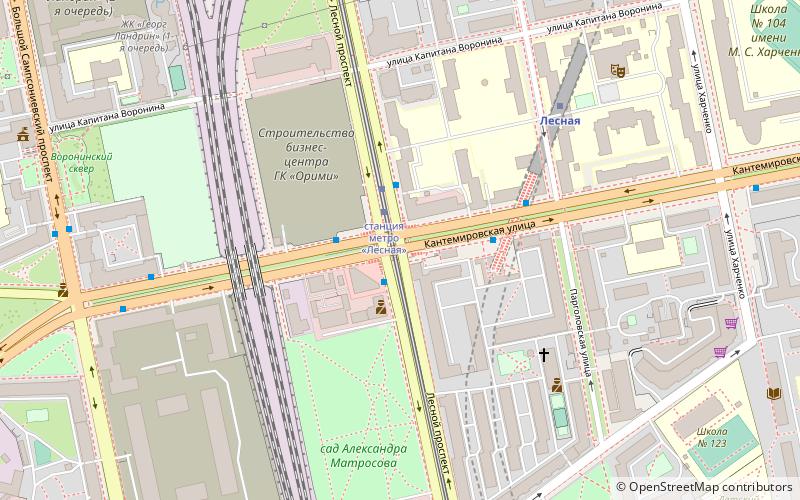Vyborg Side, Saint Petersburg

Facts and practical information
'The Vyborg Side is the traditional name of the northern and northeastern part of Saint Petersburg, Russia on the right-hand bank of the city's main waterway Neva and its first right-hand arm the Bolshaya Nevka. This large area was one of the five police administration parts of the city which were created under Peter I in 1718 and, shifting borders, existed until the February Revolution of 1917 that replaced them with rayony - districts of then Petrograd. The number and boundaries of districts varied throughout the 20 century. The Vyborg Side had previously been called Karelian Side and surrounded the old Swedish road to a then-major city of Vyborg from the Swedish town Nien and its fort located at the mouth of Okhta River, a tributary of the Neva. The Vyborg Side was divided into Vyborg District, Kalinin District and parts of Krasnogvardeyskiy District and Primorskiy District of Saint Petersburg. The active participation of its factory workers in the 1917 October Revolution was shown in a series of three feature films about a young revolutionary workman with the first name Maxim, including the eponymous Vyborgskaya storona - The Vyborg Side. ()
Калининский район (Финляндский)Saint Petersburg
Vyborg Side – popular in the area (distance from the attraction)
Nearby attractions include: Kantemirovsky Bridge, Botanical Garden, Saint Sampson's Cathedral, Sampsonievsky Bridge.
Frequently Asked Questions (FAQ)
Which popular attractions are close to Vyborg Side?
How to get to Vyborg Side by public transport?
Tram
- Литовская улица • Lines: 20, 61 (5 min walk)
- станция метро Выборгская • Lines: 20, 61 (9 min walk)
Bus
- станция метро Выборгская • Lines: 14, 86 (8 min walk)
- Гельсингфорсская улица • Lines: 86 (10 min walk)
Metro
- Выборгская • Lines: 1 (11 min walk)
- Лесная • Lines: 1 (20 min walk)
Trolleybus
- станция метро Лесная • Lines: 18, 31 (19 min walk)
- улица Харченко • Lines: 18, 31 (19 min walk)
Train
- Кушелевка (27 min walk)
 Metro
Metro









